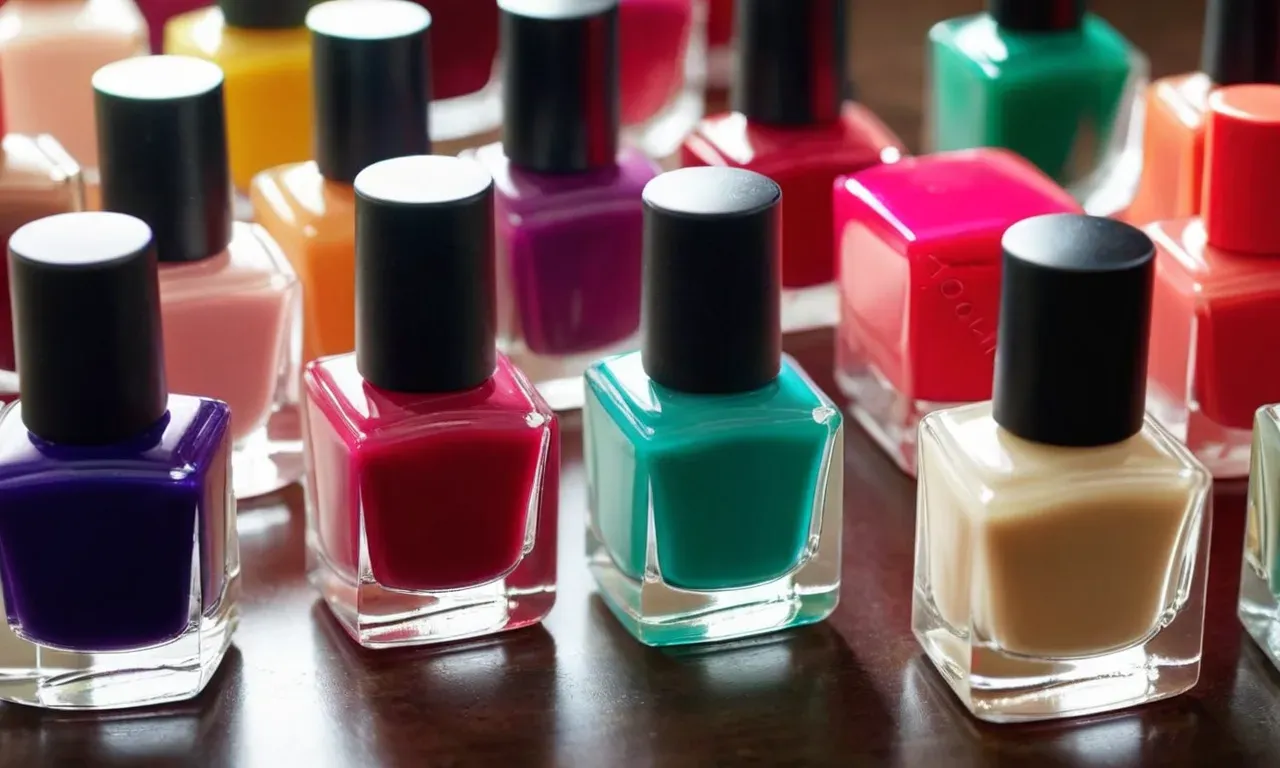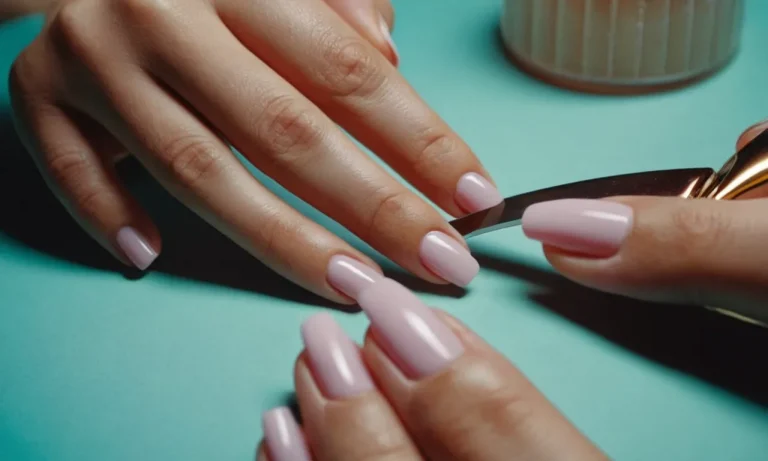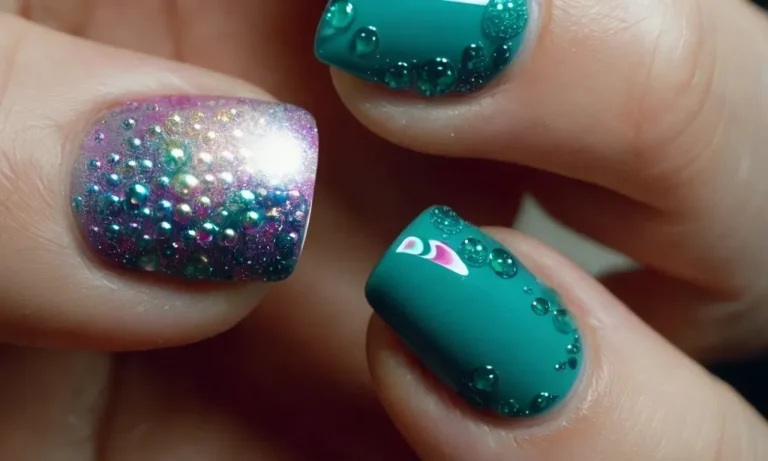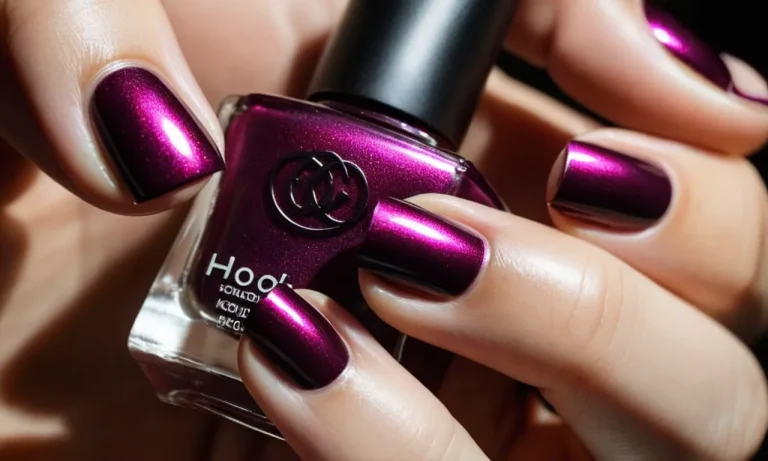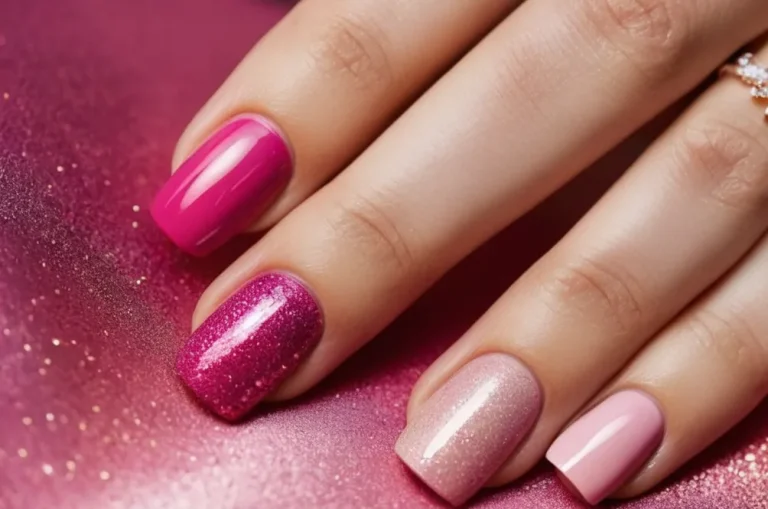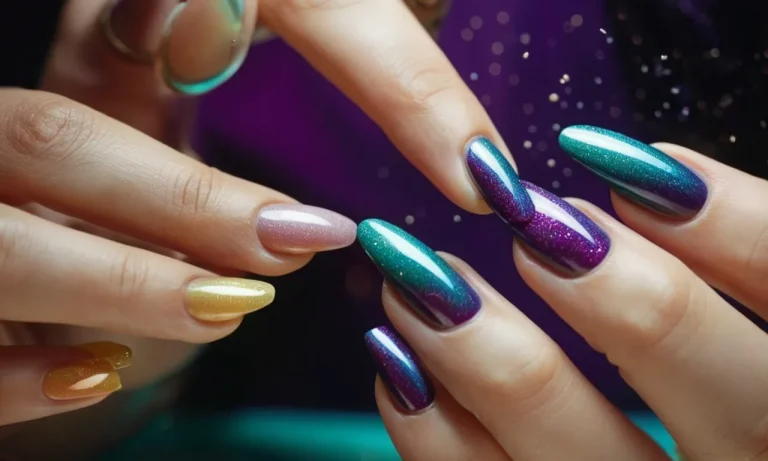What Can I Use Instead Of Nail Primer? 9 Effective Alternatives
If you love painting your nails but find yourself without nail primer, don’t panic. While primer does help polish adhere better and last longer on nails, the good news is there are quite a few alternatives you can use in a pinch.
In this comprehensive guide, we’ll walk through 9 effective options to prep your nails when you’re out of primer.
Some of these alternatives work just as well as primer, while others may not help polish adhere quite as long but will still get the job done. We’ll also explain why primer is useful and provide application tips to help you get the most out of whichever product you substitute.
So read on to learn all about the best nail primer alternatives and how to use them for fabulous nails!
Why Use Nail Primer?
Nail primer is an important preparatory product that helps polish adhere to natural nails or artificial extensions. Using a primer underneath nail polish can make a striking difference in the final look and wear time of your manicure.
Understanding the benefits of primer can help you determine if you want to use alternatives or invest in the real deal.
Helps Polish Adhere to Nails
The main function of nail primer is to help nail lacquer adhere properly so it lasts longer without chipping or peeling. Primers work by penetrating the nail surface and creating a tacky bonding layer. The ingredients in primer lightly etch the nail plate so polish has something to grip onto.
Without a primer, lubricating oils from nail beds can prevent polish from sticking well. Using a primer solves this issue so your manicure doesn’t start lifting or popping off within a couple days.
Prevents Staining
Dark polish shades like black, blue, and purple are notorious for leaving yellow stains on nails after removal. Using a primer underneath these colors creates a protective barrier to prevent this.
Most nail primers contain ingredients like formaldehyde resin that seal the nail plate. This blocks pigments from becoming trapped inside nails where they oxidize and cause stubborn staining.
Smooths Rough Textures
Nails can become rough and develop uneven, porous surfaces for various reasons. Primer helps fill in irregular textures to create a smooth foundation for polish.
Ingredients like plasticizers and copolymers work to soften and level out the nail surface area. This gives polish an even canvas to glide onto easily without dragging or getting patchy.
Extends Wear Time
By helping nail lacquer adhere better and form a stronger bond, primers allow manicures to last longer without signs of wear. Using a primer can double or even triple the life of your polish job.
In testing by beauty experts, manicures with a primer lasted a full 7-10 days without chipping or thinning at the tips. Whereas polish without a primer began showing wear at 3-5 days.
9 Nail Primer Alternatives
Clear Base Coat
A clear base coat acts as a good nail primer substitute as it prepares the nail plate for polish application. The clear coat forms a smooth surface for polish adherence and prevents staining of nails. Leading nail care brands like OPI and Essie have clear base coats like OPI Natural Nail Base Coat and Essie Here to Stay Base Coat that retail for $10-13.
Dehydrator
Using a dehydrator is an effective DIY nail primer solution. It removes moisture and oils from the nail plate for better polish bonding. Popular options like Beauty Secrets Nail Dehydrator are available on Amazon for under $10. Apply it like a primer before polish.
Rubbing Alcohol
Rubbing alcohol (70% isopropyl alcohol) preps nails by getting rid of dirt, oil and moisture. Dip a cotton ball in the alcohol and wipe clean nails before applying polish. This versatile household staple removes the need for a separate primer for gluing on tips or acrylics too.
Acetone
Using acetone instead of nail primer is a quick fix that serves the same purpose. It dissolves and removes oils from the nail plate for better polish adhesion. Pour a small amount on a cotton pad and wipe it over clean nails before painting them. However, acetone can dry out nails with repeated use.
Tea Bag Soak
Soaking nails in a black tea bag solution can temporarily prime them for polish. The tannins in black tea help remove excess oil and moisture from nails. Steep the tea bag in hot water, then soak clean nails for 5-10 minutes before applying base coat and polish.
Lemon Juice
Lemon juice’s acidic properties help lightly etch and degrease the nail surface for better polish bonding. Simply swipe lemon juice on clean nails using a cotton ball prior to your manicure. But use sparingly, as lemon juice can dry out nails long-term.
Elmer’s Glue
Believe it or not, Elmer’s school glue makes nails slightly tacky and enhances polish adhesion without a primer. Just swipe a thin layer over each nail and let it dry before painting with color. Peel off any raised edges after your manicure.
Petroleum Jelly
Petroleum jelly is an unlikely nail primer substitute that prevents staining and helps polish grip better to nails. Dab a small amount onto each nail using a cotton swab and wipe clean before your manicure for a DIY primer effect.
Baking Soda Scrub
For very oily nails, a baking soda scrub eliminates excess oil and preps nails for polish. Make a paste by mixing 1 tsp baking soda with a few drops of lemon juice or water. Gently scrub over nails, then rinse and wipe them clean before applying your manicure.
How to Apply Primer Alternatives
Base Coat
Applying a quality base coat underneath your regular nail polish can help it adhere properly without a separate primer. Look for base coats marketed as “bonding” or made specifically for natural nails. Brush the base coat on each nail from cuticle to tip and let it dry completely before adding color.
Dehydrator
Nail dehydrators designed for artificial nails can work as DIY primers. They dry out and remove oils from the nail surface. Wipe nails with a dehydrator-soaked pad and let it dry for 30-60 seconds before polish application. This helps polish stick to the nail instead of sliding off.
Alcohol & Acetone
Rubbing nails with alcohol or acetone-based nail polish remover serves as a quick primer alternative. Soak a cotton ball and wipe it over clean nails to eliminate surface oils and moisture. Give the nails 30-60 seconds to dry before adding your polish. However, overuse can dry out nails.
Tea Soak
Interestingly, strong black tea may help nails hold polish better. Steep a tea bag in hot water for 5 minutes. Then soak clean, dry nails in the liquid for 2-3 minutes. The tannins in black tea are thought to help polish bond. Wipe nails dry before polish application.
Lemon Juice
Lemon juice’s high acid content works to break down oils and roughen the nail surface for better polish adhesion. Dip a cotton ball in fresh lemon juice and wipe thoroughly over each nail. Let nails dry for 1 minute before polish. However, frequent use may weaken nails.
Glue & Petroleum Jelly
Covering nails with household glue or petroleum jelly before polish creates a tacky base that helps it cling to nails. Apply a thin layer of white school glue or jelly to each nail and let it dry semi-sticky. Then paint color normally. Peel off the hardened glue/jelly after removing your polish.
Baking Soda Scrub
For a deeper cleansing nail prep, make a scrub from baking soda and water. Mix to form a grainy paste, then gently rub it over each nail for 30 seconds. Rinse cleanly. This takes off debris and saponifies oils for better polish bonding. Make sure nails are fully dry before applying polish.
Getting the Most Out of Your Primer Alternative
Prep Nails Properly
Proper nail prep is key for getting the most out of your nail primer alternative. Start by filing nails to the desired shape and length. Use a nail buffer to smooth away any ridges on the nail plate. Then, scrub nails with soap and water or a nail dehydrator to remove any oil and debris.
This preps the nail for maximum adhesion.
Let Dry Fully Before Polish
Patience is a virtue when it comes to letting your primer alternative dry before polish application. Most alternatives, like dehydrators, acetone, and vinegar, need 2-3 minutes to fully evaporate and set. Rushing this step can lead to peeling or chips.
Set a timer if needed to avoid the temptation of painting on polish too soon.
Use Thin Even Layers
Applying primer alternatives in thin, even layers is essential. With dehydrators, one swipe per nail is sufficient. When using household products like vinegar as a DIY primer, dip a cotton ball and gently wipe a thin layer on each nail. Resist the urge to oversaturate the nail.
Too much product can weaken adhesion.
Don’t Flood Cuticles
Avoid flooding your primer alternative into the nail cuticles. Primer alternatives are not formulated to hydrate the skin like cuticle oil. Getting too much on the skin can lead to dryness and cracking. Use a cleanup brush dipped in acetone to gently wipe away excess around the cuticles.
Finish with Top Coat
Top coat is the glue that holds your manicure together and prevents chipping. After painting on color, seal it by applying 1-2 layers of quality top coat like Seche Vite or Essie Gel Setter. This locks in nail polish and smooths the manicure for a glossy finish.
Using top coat is especially important when skipping traditional primer to maximize wear.
Conclusion
While nail primer is formulated specifically to prep nails for polish application and extend wear, in a pinch there are many common household products that can work surprisingly well. Test out clear base coats, rubbing alcohol, lemon juice, petroleum jelly, or Elmer’s glue next time you find yourself without primer and want to paint your nails.
With proper prep and polish application techniques, you can still end up with a fabulous DIY manicure using primer alternatives.

